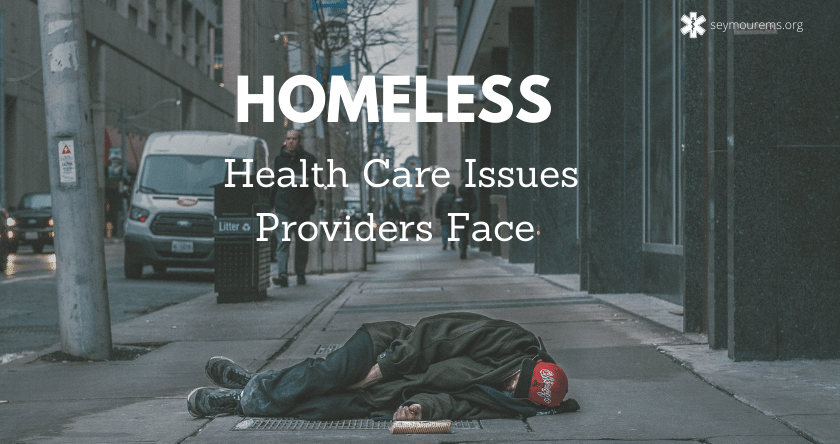Homeless Health Care Issues
Homeless Health Care Issues are on the rise nationwide. It is not hard to imagine that 18.3 out of 10,000 people are currently homeless in the United States. While the number of homeless persons varies in each state, most states see a change in numbers year to year. With growing awareness of homelessness emerging throughout the states, the desire to provide help to these people has gained popularity. Particularly around Thanksgiving time, people, families, groups, and even corporations come together to bring aid to the homeless. The ability to assist those facing homelessness can pose unique problems for members of the emergency medical provider community.
Difficult Obstacles that Arise from Neglect
The biggest problem that EMTs and Paramedics run into when receiving emergency calls that involve homeless persons is the fact that most do not participate in regular health care. This can leave EMTs and Paramedics acting as the primary health care provider for many of these patients. The fact that they generally do not seek treatment until someone is forced to call on their behalf, usually finds homeless patients facing a real emergency situation. In addition, many of these patients have a complicated and vague medical history. They may be seen and treated at many different facilities, which leaves medical providers in the dark about possible complications from their past. Most often due to trauma, a good number of homeless patients find themselves on the streets due to complications of mental illness and alcohol or substance abuse. This adds to the vagueness of their medical history because they tend not to focus on keeping track of past illnesses.
Common Problems Homeless Patients Face
The homeless population has been noted to face a variety of health problems ranging from mild to severe. Because of the obvious lack of resources, homeless patients do not practice proper hygiene. This leads to infestations such as scabies and lice or infections from cuts and scrapes. The lack of protection from elements such as heat and cold brings patients into the emergency room for heatstroke or hypothermia. Many homeless patients face respiratory diseases such as COPD, emphysema, and tuberculosis. For those facing alcohol and drug abuse, cirrhosis and hepatitis are common. Additionally, epilepsy and seizure disorder has become a complication in substance abusers. Some other common illnesses that emergency responders have noted are Peripheral Vascular Disease, diabetes, hypertension, mental disease, and dehydration.
Homeless or Food Insecure?
While homelessness is a grave issue facing Americans in 2021, there is a major difference between those that are homeless and those that are food insecure. Last year, the state of Connecticut saw neither an increase nor a decrease in the number of homeless people reported in the state. Over 450,000 Connecticut residents were food insecure while about 4,500 were homeless. Many people flood soup kitchens and food drives around the United States. The difference that distinguishes those that are food insecure from those that are homeless is the roof over their heads. While some of those seen utilizing food pantry services can afford a roof over their head, many cannot afford life’s other necessities, like food. Many people who are food insecure have a regular health care provider and a routine of continued health care, but they often face issues of being able to provide food and hygiene products for themselves and their families.
As the weather gets colder, emergency responders can expect to see an increase in emergency calls that involve homeless patients. Exposure to the element typically finds homeless patients at an increased risk of medical emergencies. If you notice a homeless person who may need medical assistance, please do not hesitate to call 9-1-1. It could be the one step that saves them and pushes them into a better life.


Recent Comments